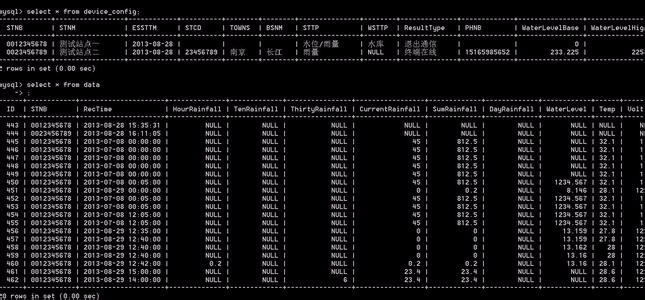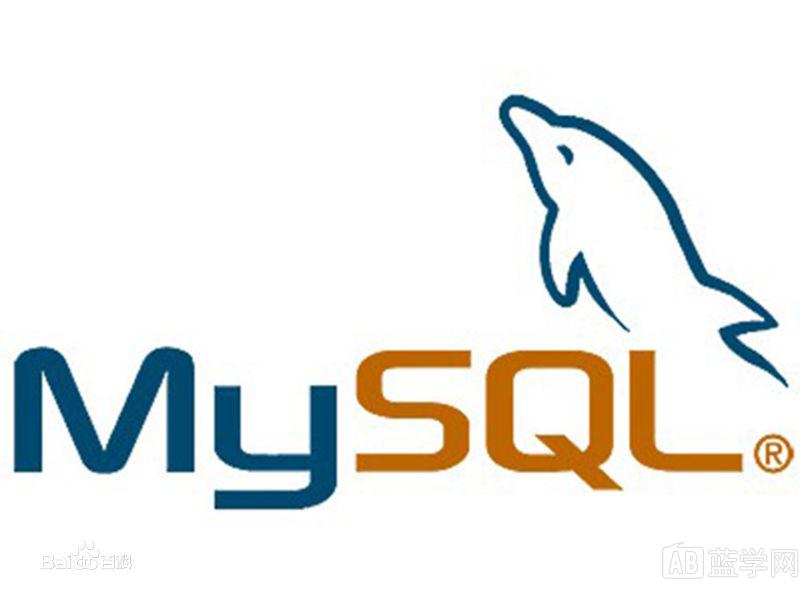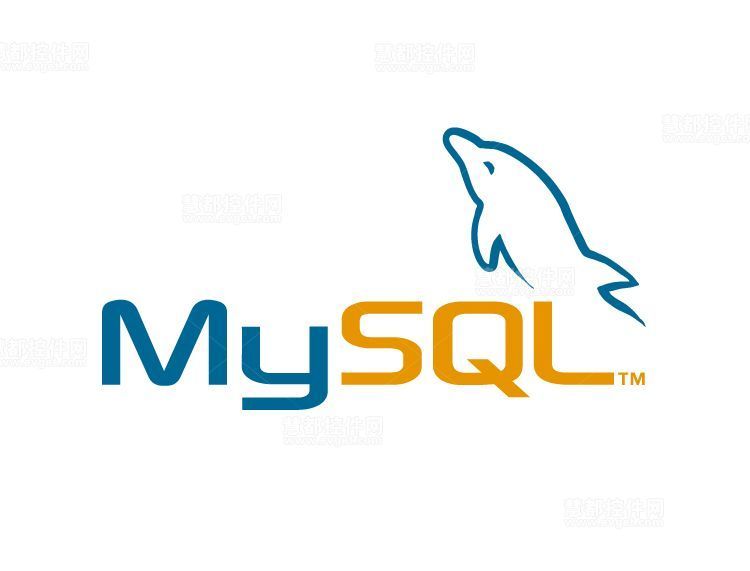10 recommended articles about commit
Using retention points, simple ROLLBACK and COMMIT statements can write or undo the entire transaction. However, this is only possible for simple transactions; more complex transactions may require partial commit or rollback. For example, the process of adding an order described earlier is a transaction. If an error occurs, just go back to before adding the orders row; there is no need to fall back to the customers table (if it exists). To support rolling back part of a transaction, it must be possible to place placeholders at appropriate locations within the transaction block. This way, if you need to roll back, you can fall back to a placeholder. These placeholders are called retention points. To create a placeholder, use the SAVEPOINT statement as follows: Enter: savepoint delete; Each savepoint is given a unique name that identifies it so that when it rolls back, MySQL knows where to roll back. In order to rollback to the retention points given in this example, you can proceed as follows: Enter: rollback to deletel; the more retention points, the better. You can set as many retention points as you want in the MySQL code, the more
1. Detailed introduction to changing the default

##Introduction: Use simple ROLLBACK and retention points The COMMIT statement can write or undo the entire transaction. However, this is only possible for simple transactions; more complex transactions may require partial commit or rollback. For example, the process of adding an order described earlier is a transaction. If an error occurs, just go back to before adding the orders row; there is no need to fall back to the customers table (if it exists). To support rolling back part of a transaction, it must be possible to place placeholders at appropriate locations within the transaction block. In this way, such as...
2. php mysqli_commit() function and mysqli_autocommit() function comparison

Introduction:
3. MySQL transaction-detailed explanation of using retention points and changing the default commit behavior

Introduction: Using retention points, simple ROLLBACK and COMMIT statements can write or undo the entire transaction. However, this is only possible for simple transactions; more complex transactions may require partial commit or rollback. For example, the process of adding an order described earlier is a transaction. If an error occurs, just go back to before adding the orders row; there is no need to fall back to the customers table (if it exists). To support rolling back part of a transaction, placeholders must be placed at appropriate locations in the transaction block. This way, if you need to roll back, you can fall back to a placeholder.
4. MySQL transaction-ROLLBACK, detailed explanation of COMMIT usage

Introduction: Using ROLLBACK Now that we know what transaction processing is, let's discuss the issues involved in the management of transaction processing. The key to managing transaction processing is to break down groups of SQL statements into logical chunks and clearly define when data should and should not be rolled back. MySQL uses the following statement to identify the start of a transaction:
5. Detailed introduction to transaction processing in PDO

Introduction: A transaction is composed of a sequence of query and/or update statements. Use begin and start transaction to start a transaction, rollback to roll back the transaction, and commit to commit the transaction. After starting a transaction, there can be several SQL queries or update statements. After each SQL is submitted for execution, there should also be statements to determine whether it is executed correctly to determine whether to roll back in the next step. If all are executed correctly, the transaction is finally committed. Once a transaction is rolled back, the database remains in the state it was in before the transaction started. It is like if an edited file is exited without saving, the original appearance of the file will be retained. So, a transaction can be considered an atomic operation, SQL within the transaction, or all
6. In-depth understanding of the 4 types of isolation levels in mysql

##Introduction : The SQL standard defines four types of isolation levels, including some specific rules to limit which changes inside and outside the transaction are visible and which are invisible. Lower isolation levels generally support higher concurrency and have lower system overhead. Read Uncommitted (read uncommitted content) At this isolation level, all transactions can see the execution results of other uncommitted transactions. This isolation level is rarely used in practical applications because its performance is not much better than other levels. Reading uncommitted data is also called dirty reading (Dirt
7. MySQL Transaction Processing Basics

8.
Detailed introduction to Spring transaction principles

9.
Database - A brief discussion of four transaction isolation levels

10.
A brief introduction to mysql cluster (picture)
 ## Introduction: 1. What is MySQL Cluster? MySQL Cluster is a shared-nothing, distributed node architecture storage solution. Its purpose is to provide fault tolerance and high performance. Data updates use read-committed isolation level. committedisolation) to ensure the consistency of data on all nodes, and a two-phase commit mechanism (two-phased commit) to ensure that all nodes have the same data (if any write operation fails, the update fails).
## Introduction: 1. What is MySQL Cluster? MySQL Cluster is a shared-nothing, distributed node architecture storage solution. Its purpose is to provide fault tolerance and high performance. Data updates use read-committed isolation level. committedisolation) to ensure the consistency of data on all nodes, and a two-phase commit mechanism (two-phased commit) to ensure that all nodes have the same data (if any write operation fails, the update fails).
[Related Q&A recommendations]:
Git, why does my local branch automatically synchronize with the local master?
The docker image cannot be deleted, please provide a solution.
After git reset returns the specified version, how do I submit it to the server?
SourceTree submits and calls the git template
ubuntu - gitlab sshkey has been added but push keeps failing
The above is the detailed content of 10 recommended articles about commit. For more information, please follow other related articles on the PHP Chinese website!

Hot AI Tools

Undresser.AI Undress
AI-powered app for creating realistic nude photos

AI Clothes Remover
Online AI tool for removing clothes from photos.

Undress AI Tool
Undress images for free

Clothoff.io
AI clothes remover

Video Face Swap
Swap faces in any video effortlessly with our completely free AI face swap tool!

Hot Article

Hot Tools

Notepad++7.3.1
Easy-to-use and free code editor

SublimeText3 Chinese version
Chinese version, very easy to use

Zend Studio 13.0.1
Powerful PHP integrated development environment

Dreamweaver CS6
Visual web development tools

SublimeText3 Mac version
God-level code editing software (SublimeText3)

Hot Topics
 1664
1664
 14
14
 1421
1421
 52
52
 1315
1315
 25
25
 1266
1266
 29
29
 1239
1239
 24
24
 PHP and Python: Comparing Two Popular Programming Languages
Apr 14, 2025 am 12:13 AM
PHP and Python: Comparing Two Popular Programming Languages
Apr 14, 2025 am 12:13 AM
PHP and Python each have their own advantages, and choose according to project requirements. 1.PHP is suitable for web development, especially for rapid development and maintenance of websites. 2. Python is suitable for data science, machine learning and artificial intelligence, with concise syntax and suitable for beginners.
 PHP in Action: Real-World Examples and Applications
Apr 14, 2025 am 12:19 AM
PHP in Action: Real-World Examples and Applications
Apr 14, 2025 am 12:19 AM
PHP is widely used in e-commerce, content management systems and API development. 1) E-commerce: used for shopping cart function and payment processing. 2) Content management system: used for dynamic content generation and user management. 3) API development: used for RESTful API development and API security. Through performance optimization and best practices, the efficiency and maintainability of PHP applications are improved.
 Explain secure password hashing in PHP (e.g., password_hash, password_verify). Why not use MD5 or SHA1?
Apr 17, 2025 am 12:06 AM
Explain secure password hashing in PHP (e.g., password_hash, password_verify). Why not use MD5 or SHA1?
Apr 17, 2025 am 12:06 AM
In PHP, password_hash and password_verify functions should be used to implement secure password hashing, and MD5 or SHA1 should not be used. 1) password_hash generates a hash containing salt values to enhance security. 2) Password_verify verify password and ensure security by comparing hash values. 3) MD5 and SHA1 are vulnerable and lack salt values, and are not suitable for modern password security.
 PHP: A Key Language for Web Development
Apr 13, 2025 am 12:08 AM
PHP: A Key Language for Web Development
Apr 13, 2025 am 12:08 AM
PHP is a scripting language widely used on the server side, especially suitable for web development. 1.PHP can embed HTML, process HTTP requests and responses, and supports a variety of databases. 2.PHP is used to generate dynamic web content, process form data, access databases, etc., with strong community support and open source resources. 3. PHP is an interpreted language, and the execution process includes lexical analysis, grammatical analysis, compilation and execution. 4.PHP can be combined with MySQL for advanced applications such as user registration systems. 5. When debugging PHP, you can use functions such as error_reporting() and var_dump(). 6. Optimize PHP code to use caching mechanisms, optimize database queries and use built-in functions. 7
 What are HTTP request methods (GET, POST, PUT, DELETE, etc.) and when should each be used?
Apr 09, 2025 am 12:09 AM
What are HTTP request methods (GET, POST, PUT, DELETE, etc.) and when should each be used?
Apr 09, 2025 am 12:09 AM
HTTP request methods include GET, POST, PUT and DELETE, which are used to obtain, submit, update and delete resources respectively. 1. The GET method is used to obtain resources and is suitable for read operations. 2. The POST method is used to submit data and is often used to create new resources. 3. The PUT method is used to update resources and is suitable for complete updates. 4. The DELETE method is used to delete resources and is suitable for deletion operations.
 Explain the difference between self::, parent::, and static:: in PHP OOP.
Apr 09, 2025 am 12:04 AM
Explain the difference between self::, parent::, and static:: in PHP OOP.
Apr 09, 2025 am 12:04 AM
In PHPOOP, self:: refers to the current class, parent:: refers to the parent class, static:: is used for late static binding. 1.self:: is used for static method and constant calls, but does not support late static binding. 2.parent:: is used for subclasses to call parent class methods, and private methods cannot be accessed. 3.static:: supports late static binding, suitable for inheritance and polymorphism, but may affect the readability of the code.
 How does PHP handle file uploads securely?
Apr 10, 2025 am 09:37 AM
How does PHP handle file uploads securely?
Apr 10, 2025 am 09:37 AM
PHP handles file uploads through the $\_FILES variable. The methods to ensure security include: 1. Check upload errors, 2. Verify file type and size, 3. Prevent file overwriting, 4. Move files to a permanent storage location.
 How does PHP type hinting work, including scalar types, return types, union types, and nullable types?
Apr 17, 2025 am 12:25 AM
How does PHP type hinting work, including scalar types, return types, union types, and nullable types?
Apr 17, 2025 am 12:25 AM
PHP type prompts to improve code quality and readability. 1) Scalar type tips: Since PHP7.0, basic data types are allowed to be specified in function parameters, such as int, float, etc. 2) Return type prompt: Ensure the consistency of the function return value type. 3) Union type prompt: Since PHP8.0, multiple types are allowed to be specified in function parameters or return values. 4) Nullable type prompt: Allows to include null values and handle functions that may return null values.




